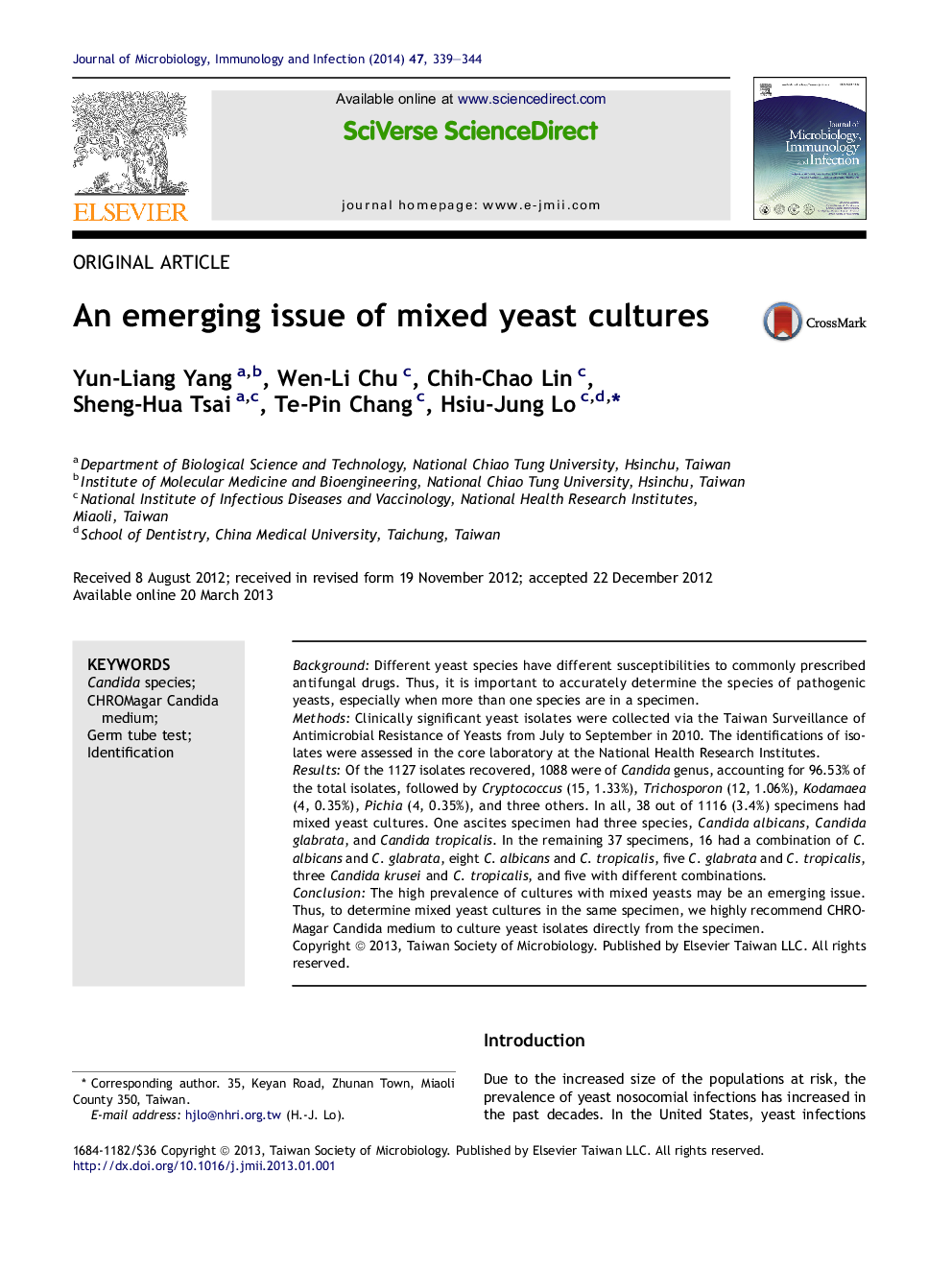| Article ID | Journal | Published Year | Pages | File Type |
|---|---|---|---|---|
| 3377828 | Journal of Microbiology, Immunology and Infection | 2014 | 6 Pages |
BackgroundDifferent yeast species have different susceptibilities to commonly prescribed antifungal drugs. Thus, it is important to accurately determine the species of pathogenic yeasts, especially when more than one species are in a specimen.MethodsClinically significant yeast isolates were collected via the Taiwan Surveillance of Antimicrobial Resistance of Yeasts from July to September in 2010. The identifications of isolates were assessed in the core laboratory at the National Health Research Institutes.ResultsOf the 1127 isolates recovered, 1088 were of Candida genus, accounting for 96.53% of the total isolates, followed by Cryptococcus (15, 1.33%), Trichosporon (12, 1.06%), Kodamaea (4, 0.35%), Pichia (4, 0.35%), and three others. In all, 38 out of 1116 (3.4%) specimens had mixed yeast cultures. One ascites specimen had three species, Candida albicans, Candida glabrata, and Candida tropicalis. In the remaining 37 specimens, 16 had a combination of C. albicans and C. glabrata, eight C. albicans and C. tropicalis, five C. glabrata and C. tropicalis, three Candida krusei and C. tropicalis, and five with different combinations.ConclusionThe high prevalence of cultures with mixed yeasts may be an emerging issue. Thus, to determine mixed yeast cultures in the same specimen, we highly recommend CHROMagar Candida medium to culture yeast isolates directly from the specimen.
